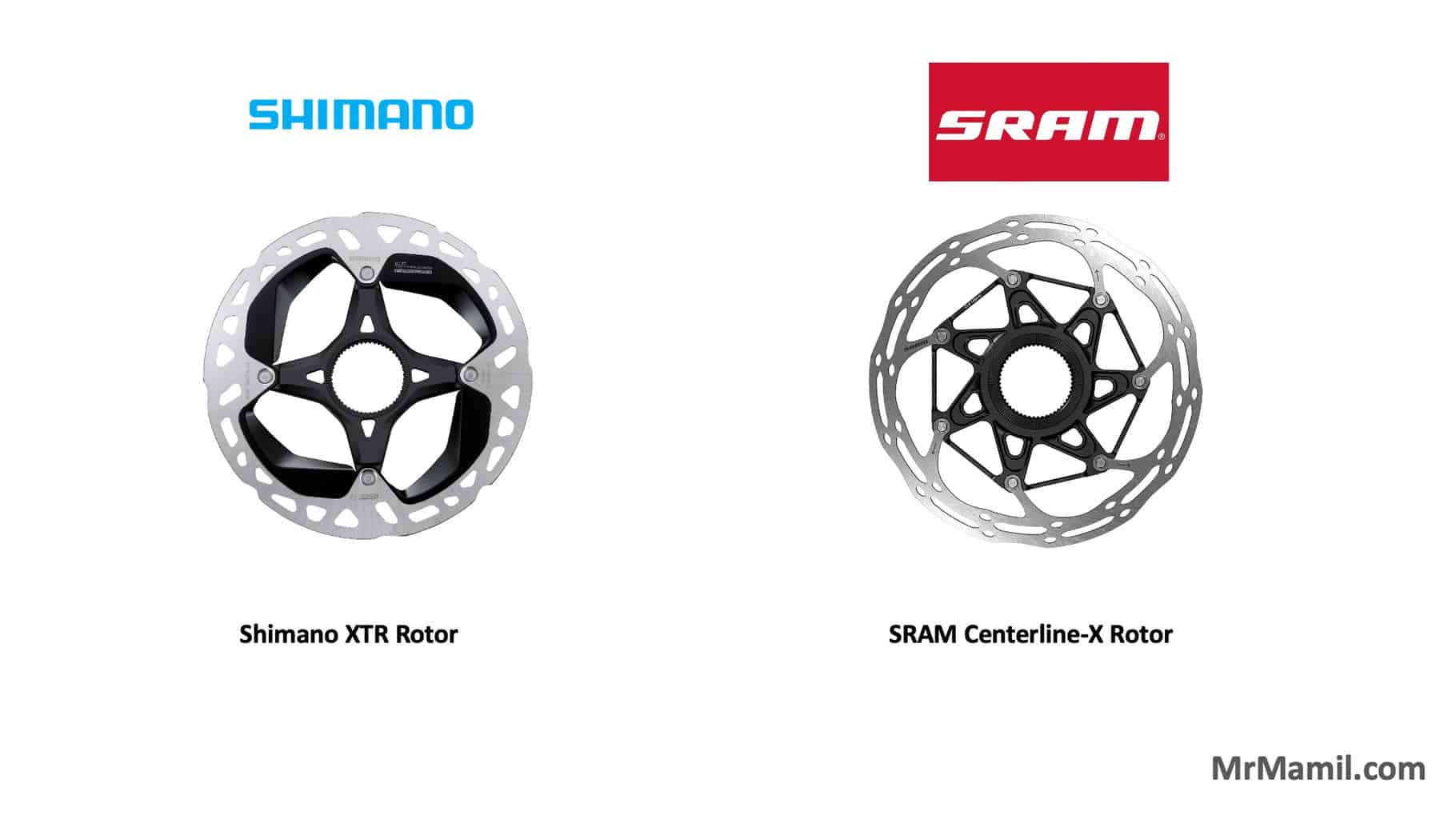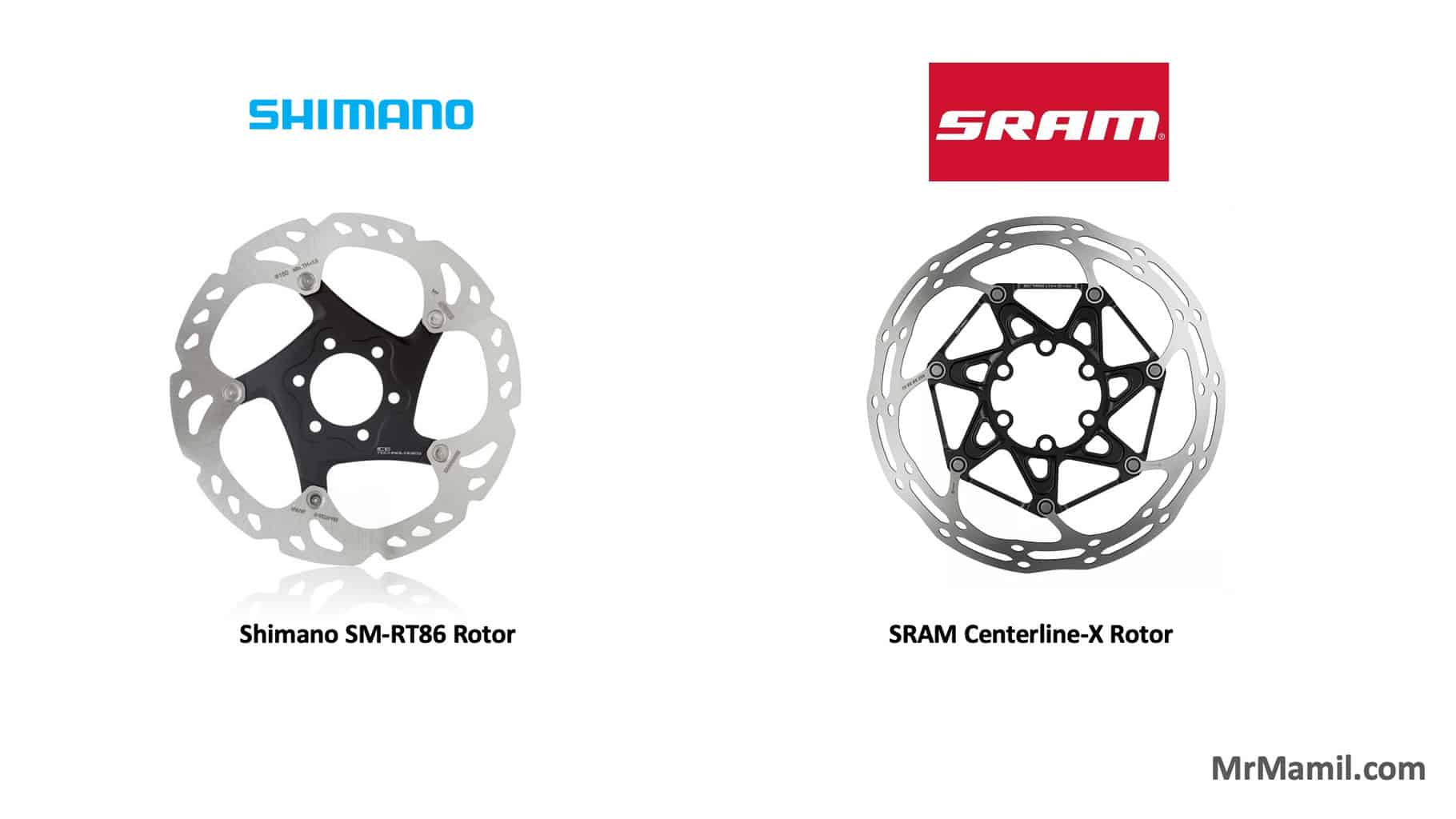Disc brake rotors are an essential component of a bicycle’s braking system, and there are two main types of rotor mounting designs;
- Centerlock
- 6-bolt
Each system has unique features and benefits; choosing the right one for your bike will depend on your needs and preferences.
In this article, I’ll compare and contrast Centerlock and 6-Bolt disc rotors, discussing their differences, advantages, and disadvantages.
Centerlock disc rotors

The Centerlock rotor design was patented by Shimano on 16th April 2002, with Takanori Kanehisa being the inventor. Shimano licenses the design to other manufacturers, allowing them to produce wheel hubs and disc rotors compatible with the system.
The advantage of a Centerlock rotor is that it allows for easier and faster installation and removal compared to a traditional 6-bolt rotor. This design eliminates the chances of incorrect and uneven installation that could cause the rotor to warp.
The rotor is attached to the wheel hub using a splined system and a single lockring rather than six individual bolts. The single lockring design and lack of a 6-bolt adapter help reduce the wheel’s overall weight.
Advantages of Centerlock
- Faster and easier installation
- Can be installed to a 6-bolt wheelset via an adapter
- Disc rotor is less prone to warping due to incorrect installation
Disadvantages of Centerlock
- Less choices in the low to mid-range price points
- More expensive than the same 6-bolt model
- Requires a special tool (cassette lockring or external bottom bracket tool) to install and remove
6-bolt disc rotors

A 6-bolt disc brake rotor attaches to the wheel hub using six bolts. The 6-bolt rotor was widely used in mountain bikes up until the 2010s. It is now an older design, primarily used in low to mid-end bicycles. Mid to high-end bicycles today use the Centerlock design.
To install a 6-bolt rotor, you need a torque wrench and T25 Torx bit. Line up the rotor with the wheel hub and tighten the six bolts evenly to the correct torque values. SRAM/Avid rotors require 6.2Nm, and Shimano recommends between 2 to 4Nm.
The installation process can be time-consuming and prone to errors. It is important to ensure that the bolts are tightened evenly to avoid warping the rotor or causing other damage to the brake system.
Advantages of 6-bolt
- Cheaper than the same Centerlock model
- More rotor choices, especially at the low to mid-range pricing points
Disadvantages of 6-bolt
- Takes longer to install and remove
- Bolts might get stripped or seized
Wheelset compatibility
The easiest way is to check the wheelset’s specifications. There are three rotor interface designs on wheel hubs;
- Centerlock. Wheelsets after 2020 use a Centerlock hub shell design with an internal thread for the lockring. This is the most common design used today on road bikes.
- AFS, Axial Fixing System is only found on Campagnolo and Fulcrum wheelsets. They fit Centerlock disc rotors but have a slightly different lockring design. The wheel hub shell has an external thread that the lockring threads over the top of.
- 6-bolt. Older and some low-end disc wheelsets still use a 6-bolt design.
It is possible to fit a 6-bolt rotor to a Centerlock disc hub via an adapter, but not vice versa.
How to choose between Centerlock or 6-bolt?
Here are some things to consider when deciding between a Centerlock or a 6-bolt rotor.
- Wheelset hub. New disc wheelsets after 2020 all use a Centerlock design.
- Future-proofing. The industry is gradually moving away from 6-bolt and towards the Centerlock design. Hence, expect more Centerlock rotor choices across the low to mid-tier pricing points soon. For example, the 12-speed Shimano Dura-Ace/Ultegra/105 groupset only comes with Centerlock rotors.
- Repairability on the road. The 6-bolt design is easier to repair on the road, especially during backpacking, since it only requires a T25 Torx bit compared to a special tool for the Centerlock.

Alex Lee is the founder and editor-at-large of Mr. Mamil. Coming from a professional engineering background, he breaks down technical cycling nuances into an easy-to-understand and digestible format here.
He has been riding road bikes actively for the past 12 years and started racing competitively in the senior category during the summer recently.